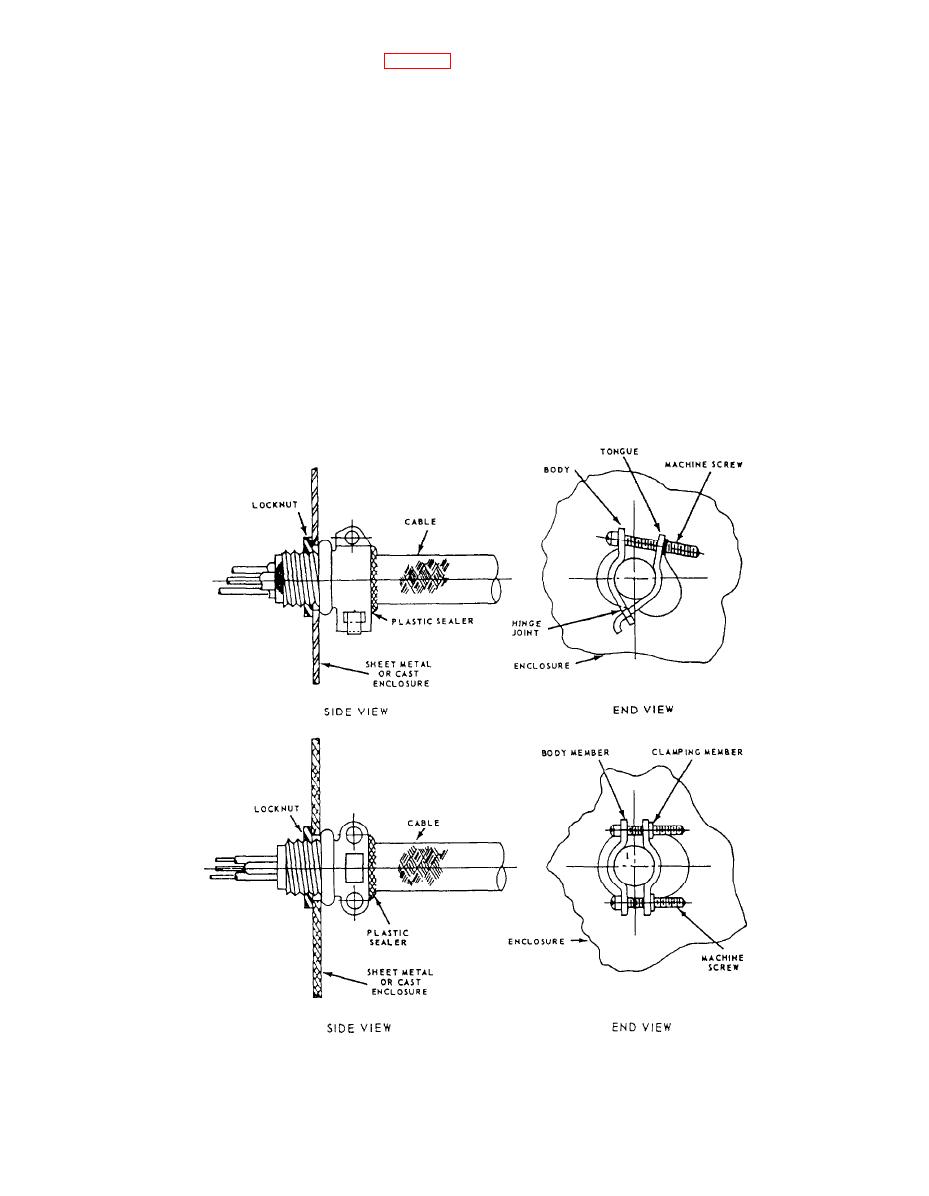 |
|||
|
|
|||
| ||||||||||
|
|
 Stuffing tubes are made of nylon, steel, brass, or
commonly called box connectors (shown in fig. 2-48),
aluminum alloys. Nylon tubes have very nearly
may be used for cable entry into all other types of
replaced metal tubes for cable entry to equipment
equipment enclosures. However, top entry into these
enclosures.
enclosures should be made dripproof through stuffing
tubes or cable clamps sealed with plastic sealer.
The nylon stuffing tube is lightweight, positive-
sealing, and noncorrosive. It requires only minimum
Below the main deck, stuffing tubes are used for
maintenance for the preservation of watertight
cable penetrations of watertight decks, watertight
integrity. The watertight seal between the entrance to
bulkheads, and watertight portions of bulkheads that
the enclosure and nylon body of the stuffing tube is
are watertight only to a certain height. Above the main
made with a neoprene O-ring, which is compressed by
deck, stuffing tubes are used for cable penetrations of
a nylon locknut. A grommet-type neoprene packing is
(1) watertight or airtight boundaries; (2) bulkheads
compressed by a nylon cap to accomplish a watertight
designed to withstand a waterhead; (3) that portion of
seal between the body of the tube and the cable. Two
bulkheads below the height of the sill or coaming of
slip washers act as compression washers on the
compartment accesses; (4) flametight or gastight or
watertight bulkheads, decks, or wiring trunks within
grommet as the nylon cap of the stuffing tube is
tightened. Grommets of the same external size, but
turrets or gun mounts; and (5) structures subject to
with different sized holes for the cable, are available.
sprinkling.
2-44
|
|
Privacy Statement - Press Release - Copyright Information. - Contact Us |